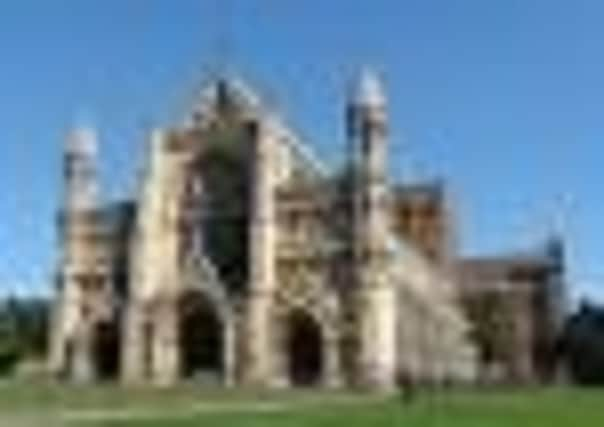Passing a very abbey couple of hours


I’m certainly guilty of this when it comes to St Albans Abbey, where I used to go at least four times a year for school services. Despite always being in awe of the building and its atmosphere, I never really scratched the surface when it came to the history.
So, on a cold and grey December afternoon I ventured back to the abbey in a tired and slightly hungover state.
Advertisement
Hide AdAdvertisement
Hide AdFor someone who cries at anything even slightly cute or heart-rending on television (damn you, John Lewis Christmas advert), I soon realised I was in trouble as the children’s Christingle service was about to start.
I stayed to join in with the first couple of hymns but didn’t think my tear ducts could withstand the force of little ones singing the first verse of Away in a Manger on their own, and ducked out of the nave just in time.
There’s so much to explore at the abbey that it’s impossible to do it all in a couple of hours (and I’d recommend booking in advance if you want to do the vertigo-inducing tower tour – details are available on the abbey website), but even the shortest visit allows you to discover a whole range of treasures.
The story of the abbey is that it was founded on the site where St Alban, the first Christian martyr, was executed by the Romans at the end of the 3rd century.
Advertisement
Hide AdAdvertisement
Hide AdThe site attracted a steady stream of pilgrims, but it was with the telling of Alban’s story by the Venerable Bede in the 8th century that the legend grew, and the Saxon Benedictine monastery was founded, probably by King Offa, at the end of the century. It was replaced by a large Norman church and monastery in 1077, much of which can still be seen today.
Much of the monastery was lost with Henry VIII’s Dissolution, with the remaining church falling into disrepair, but the generosity of local benefactors saw the building restored, and today it is a fascinating mix of Saxon, Norman, Gothic and Early English architecture.
There’s so much to see here, from Alban’s shrine and the stunning Tower and Presbytery ceilings through to idiosyncrasies such as the possibly unfinished paua shell-clad altarpiece by Sir Alfred Gilbert, who also designed the statue of Eros at Piccadilly Circus, and the strange disembodied sideways head in the corner of the shrine chapel.
I was lucky during my visit to talk to two exceptional guides. If you’ve got the time these people really are worth chatting to – the depth of their knowledge is astounding. I realised how different the abbey would have looked in its glory days, with the pillars and walls decorated in vivid colours with patterns and portraits of saints.
Advertisement
Hide AdAdvertisement
Hide AdTraces of these remain around the building, and visitors should not miss the 14th century figure of St William of York in the shrine chapel, where you can also see the watching chamber used by the monks to keep an eye on pilgrims visiting St Alban’s shrine. Carved from solid oak, the watching chamber is decorated with all sorts of scenes from 15th century daily life, and you can peer up the well-worn narrow staircase and imagine the monks beginning a long shift at the top.
One guide told me the abbey is often mocked for its mish-mash of architecture, but I think this unique blend of styles and periods makes for a truly fascinating attraction.